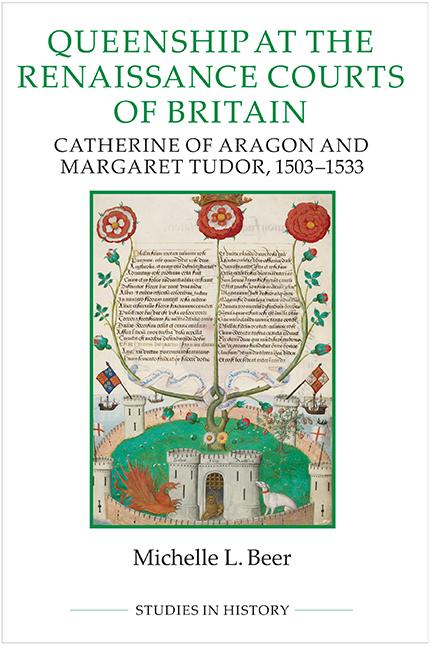Book contents
Summary
‘My husband, for hastynesse, w[ith]Rogecrosse I coude not sende your Grace the pece of the King of Scotts cote which John Glyn now bringeth. In this your grace shal see how I can kepe my premys, sending you for your banners a King's cote. I thought to send hymself unto you, but our Englishmens herts wold not suffre it. It shulde have been better for hym to have been in peax than have this rewarde. Al that God sendeth is for the best.’
When Catherine of Aragon wrote to Henry viii on 16 September 1513 he was campaigning in northern France, and had made his wife queen regent and governor of England in his absence. While the bulk of Henry's armies were fighting in France, James iv invaded the north of England and sacked several towns before meeting the English army that Catherine had sent north, commanded by Thomas Howard, earl of Surrey. In a stunning victory, Surrey destroyed the Scottish army at the battle of Flodden Field on 9 September, killing the Scottish king and nearly a hundred of his nobility. It was the greatest military victory of Henry's reign and made the Scottish border secure for the English for a generation. Flodden also caused havoc in Scotland, wiping out a generation of Scottish noblemen and putting Margaret Tudor at the head of a minority government for her infant son, now James v. Although occurring under very different circumstances, the regencies of Catherine and Margaret were the ultimate official acknowledgement of the public partnership between queens and their kings during this period.
Not all queens were granted the responsibility of regency, although it was a historically acceptable role for them to fulfil in Western Europe. Usually they were appointed regents for their under-age sons. Catherine, of course, was regent for an adult king who was temporarily absent from his realms, but her situation echoed familiar Spanish practices. The Iberian kingdoms had a strong tradition of female regency and lieutenancy, and queens had frequently acted as regents for under-age heirs and while their husbands were on campaign. The kingdom of Aragon had developed the role of queen-lieutenant, who acted as a co-ruler while the king was visiting his other kingdoms or on campaign. Catherine's paternal grandmother, Juana Enriquez, was an able queen-lieutenant who had taught her son much about Aragonese politics.
- Type
- Chapter
- Information
- Queenship at the Renaissance Courts of BritainCatherine of Aragon and Margaret Tudor 1503–1533, pp. 149 - 157Publisher: Boydell & BrewerPrint publication year: 2018



